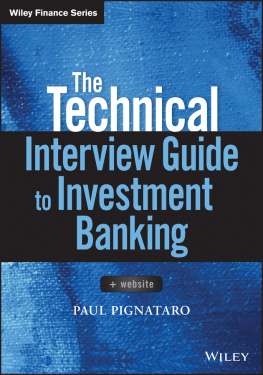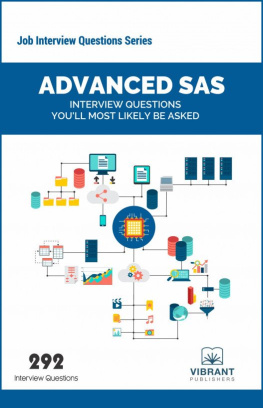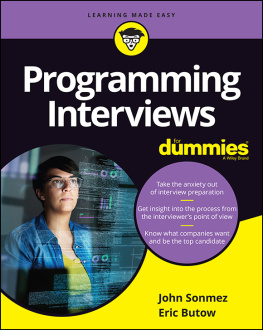
The Wiley Finance series contains books written specifically for finance and investment professionals as well as sophisticated individual investors and their financial advisors. Book topics range from portfolio management to e-commerce, risk management, financial engineering, valuation and financial instrument analysis, as well as much more. For a list of available titles, visit our Web site at www.WileyFinance.com.
Founded in 1807, John Wiley & Sons is the oldest independent publishing company in the United States. With offices in North America, Europe, Australia and Asia, Wiley is globally committed to developing and marketing print and electronic products and services for our customers' professional and personal knowledge and understanding.
Copyright 2017 by Paul Pignataro. All rights reserved.
Published by John Wiley & Sons, Inc., Hoboken, New Jersey.
Published simultaneously in Canada.
No part of this publication may be reproduced, stored in a retrieval system, or transmitted in any form or by any means, electronic, mechanical, photocopying, recording, scanning, or otherwise, except as permitted under Section 107 or 108 of the 1976 United States Copyright Act, without either the prior written permission of the Publisher, or authorization through payment of the appropriate per-copy fee to the Copyright Clearance Center, Inc., 222 Rosewood Drive, Danvers, MA 01923, (978) 7508400, fax (978) 6468600, or on the Web at www.copyright.com. Requests to the Publisher for permission should be addressed to the Permissions Department, John Wiley & Sons, Inc., 111 River Street, Hoboken, NJ 07030, (201) 7486011, fax (201) 7486008, or online at http://www.wiley.com/go/permissions.
Limit of Liability/Disclaimer of Warranty: While the publisher and author have used their best efforts in preparing this book, they make no representations or warranties with respect to the accuracy or completeness of the contents of this book and specifically disclaim any implied warranties of merchantability or fitness for a particular purpose. No warranty may be created or extended by sales representatives or written sales materials. The advice and strategies contained herein may not be suitable for your situation. You should consult with a professional where appropriate. Neither the publisher nor author shall be liable for any loss of profit or any other commercial damages, including but not limited to special, incidental, consequential, or other damages.
For general information on our other products and services or for technical support, please contact our Customer Care Department within the United States at (800) 7622974, outside the United States at (317) 5723993 or fax (317) 5724002.
Wiley publishes in a variety of print and electronic formats and by print-on-demand. Some material included with standard print versions of this book may not be included in e-books or in print-on-demand. If this book refers to media such as a CD or DVD that is not included in the version you purchased, you may download this material at http://booksupport.wiley.com. For more information about Wiley products, visit www.wiley.com.
Library of Congress Cataloging-in-Publication Data is available:
ISBN 978-1-119-16139-4 (Hardcover)
ISBN 978-1-119-16141-7 (ePDF)
ISBN 978-1-119-16140-0 (ePub)
Cover Design: Wiley
Cover Image: Mikhail Zahranichny/Shutterstock
This book is dedicated to every investor in the pursuit of enhancing wealththose who have gained, and those who have lostthis continuous struggle has confounded the minds of many. This book should be one small tool to help further this endeavor; and if successful, the seed planted will contribute to a future of more informed investors and smarter markets.
Preface
Investment banks perform two major functions. First, they act as intermediaries between investors, or suppliers of capital, and entities that request capital such as corporations. Second, investment banks advise corporations on mergers, acquisitions, restructurings, and other major corporate actions.
Jobs within the investment banking industry vary widely; some roles can be very lucrative and as a result be highly sought after and competitive.
This book seeks to give any student or professional interested in the investment banking industry the technical tools to ace an investment banking interview. Having worked in the investment banking industry, I will give my personal perspective on what the investment banking interview process is like. I will provide advice and strategy on how to best navigate such an interview process. The book will contain a series of standard investment banking and interview preparation questions that increase in difficulty. We will also go through a series of case studies important for later-stage investment banking and private equity interviews. This book is the ideal go-to guide for anyone who is looking to break into the industry.
HOW THIS BOOK IS STRUCTURED
This book is divided into five parts:
- Introduction to Investment Banking
- Core Financial Statements
- Valuation
- Mergers and Acquisitions
- Leveraged Buyouts
Each part will aim to give a brief overview of the core concepts: enough to better your knowledge for investment banking interviews or just a refresher. After each overview, chapters will contain interview questions and answers in increasing difficulty. These questions and answers do not capture every single possible topic, but will cover the most common. The most important thing to remember is you will never know exactly what will be asked in an interview, or how a particular question or scenario will be posed; but if you have the proper conceptual understanding of the core topics, you will be able to handle a multitude of questions asked on each topic.
If you need a stronger technical understanding or an actual modeling overview of each topic, I would recommend reading my other books, which dive deeper into each topic and provide steps for building a model from scratch:
- Financial ModelingFinancial Modeling and Valuation: A Practical Guide to Investment Banking and Private Equity
- ValuationFinancial Modeling and Valuation: A Practical Guide to Investment Banking and Private Equity
- Mergers and AcquisitionsMergers, Acquisitions, Divestitures, and Restructurings: A Practical Guide to Investment Banking and Private Equity
- Leveraged BuyoutsLeveraged Buyouts: A Practical Guide to Investment Banking and Private Equity
Introduction
An investment bank is large, complex, and has many facets. In order to best understand the investment banking interview process, it is important to first give an overview of the major investment banking departments operating within an investment bank and the major roles within each department. This will help a job seeker identify and better understand the roles sought after in an investment bank and the most popular areas of interest for job applicants. Note this is just a high-level overview; you will always find more departments as you dig deeper, and each bank may slightly vary.
It is first important to highlight the difference between an investment bank and a commercial bank. An investment bank underwrites securities and performs advisory services while a commercial bank accepts and manages deposits for businesses and individuals.
In 1933 the United States issued the Glass-Steagall Act that prohibited banks from performing both investment banking and commercial banking. This act was set up in response to the Stock Market Crash of 1929 in order to prevent banks from betting on the market at the expense of depositors. This act was repealed, however, in 1999.
Next page








